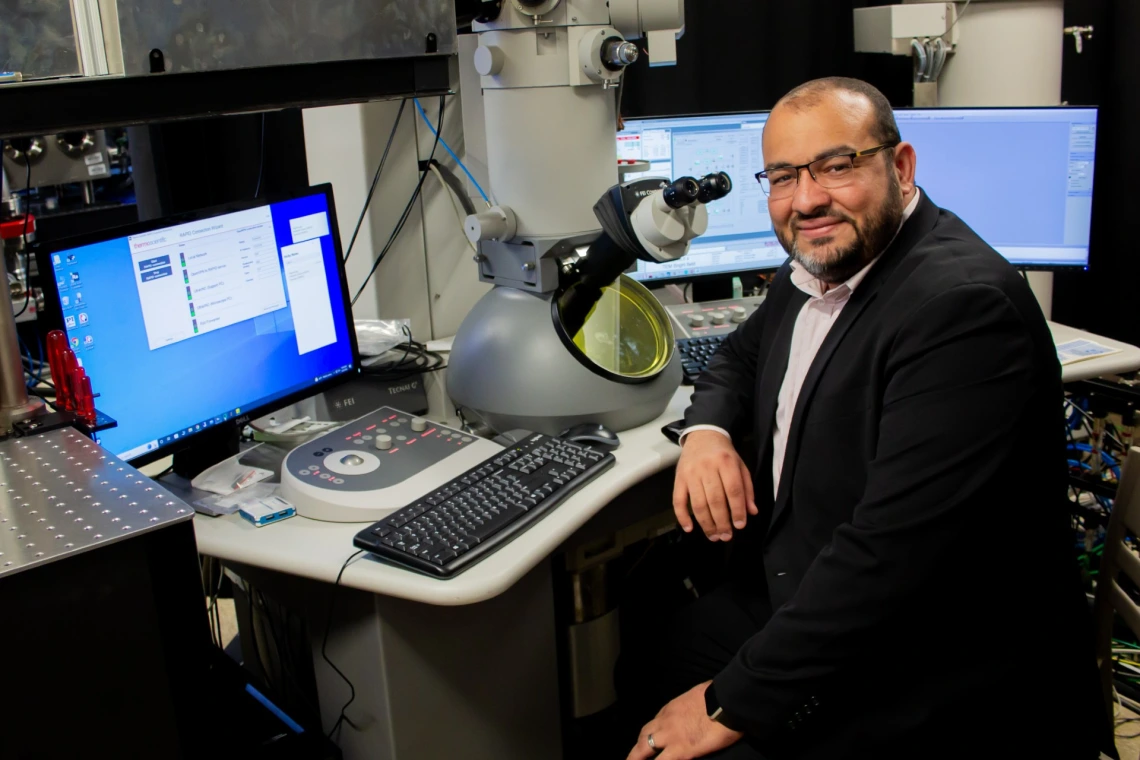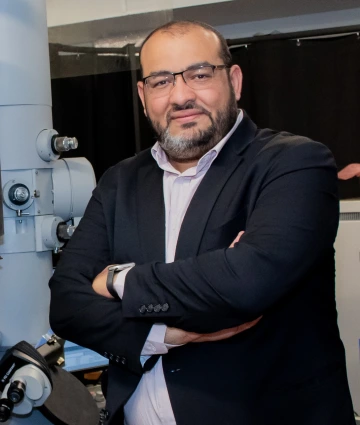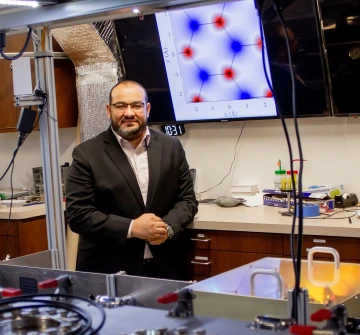University of Arizona attomicroscope wins Microscopy Today Award: Exploring electron motion from quantum worlds to human health

Dr. Hassan leads a small ‘research family’ at the University of Arizona, where curiosity drives discovery.
Courtesy of Mohammad Hasssan
As a high school student in a quantum chemistry lecture, Dr. Mohammed Hassan, associate professor of physics and optical science at the University of Arizona, couldn't stop wondering about the invisible world his professors described.
He didn’t know it then, but that question would define and shape his career. Hassan is the inventor of the attomicroscope, the world’s fastest electron microscope.
After finishing his undergraduate degree, he learned about a leading group at the Max Planck Institute in Germany that was using ultrafast laser pulses to capture and control the movement of electrons. Determined to join them, he applied.
“That was one of the turning points in my life,” he reflected. The group would later win the 2023 Nobel Prize in Physics for its pioneering work.
A camera for electrons
To explain the attomicroscope, Hassan breaks its inner workings down to what everyone knows best – their cellphones. Just as smartphones let us capture our life processes' secrets in high definition, his device captures electrons in motion.
“It’s like a very high-speed, very high-accuracy camera,” Hassan said. “In daily life, you document your moments. In our lab, we document the moments of electrons and how they move and behave in real time.”
Unlike the typical transmission electron microscopes, which are limited by the shutter speed of a camera, the attomicroscope uses laser pulses to time stamp the electron’s movements with unmatched precision.
A research family’s breakthrough
At the U of A Hassan leads a small group of no more than three students – a “research family” as he calls it, including Mohammed Yehia, Carson Bayers, and Dr. Nassar Doudin. They plan experiments together each morning, troubleshoot throughout the day, and sometimes stay late into the night, driven not by deadlines but by innate curiosity.

Dr. Mohammed Hassan
That spirit paid off one night in April 2022, when his students – Dr. Danad Hui, Huisan Alqattan, and Yehia – called with urgency, convinced they had just seen electron motion for the first time. Hassan rushed back to the lab and together they ran the tests to confirm it.
“It was real,” he said. “That moment was incredible and I am grateful to my team because they are the reason this was possible.”
Recognition and responsibility
In 2023 Hassan’s microscope set a Guinness World Record as the fastest of its kind. He used the achievement as an opportunity to share his work with the community.
“It was particularly exciting to deliver this information to the public,” he said. “Science is not just for scientists. At the end of the day, people are consumers of science. What we’re doing is to help humanity, make life easier, and open them up to new technologies.”
His work also earned him the 2025 Innovation Award of the Year from the Microscopy Society of America. Each year MSA honors ten individuals or organizations for groundbreaking innovations in microscopy or microanalysis. Despite the recognition, Hassan points back to the long road of trial and error it took to get there.
“When you’re working down a road no one has gone before, you don’t know if failure means something is impossible or if it just needs more optimization,” he said. “You cannot give up before you’ve explored all the options.”
What comes next
Hassan said he believes the atomicroscope’s impact will stretch far beyond physics. Because chemical reactions, DNA interactions, and protein processes are all governed by electron motion, being able to observe those motions could transform medicine and technology.

From high school curiosity to groundbreaking innovation, Hassan's journey is fuled by the pursuit of the unseen.
Courtesy of Mohammad Hassan
“You cannot control what you cannot see,” he said. “Now we can see electrons.”
If given the chance to point the microscope anywhere, Hassan knows where he’d start: DNA.
“I would love to know the secrets of life from DNA,” he said. “Can we control the way electrons move through DNA? Could this lead to personalized medicine? Could it change how we treat disease?”
He compared the future of the attomicroscope to the evolution of smartphones, each new version offering sharper images, better tools, and more possibilities. His team is in the developing stages of the next generation of the microscope that would combine quantum approaches with artificial intelligence to create an ultrafast quantum imaging device.
Hassan’s core motivation remains the same as it was when his interest in electrons in motion first began: the pursuit of curiosity, persistence in the face of setbacks, and the belief that seeing the unseen could one day change lives.
To learn more about Dr. Hassan and his research, click here.

